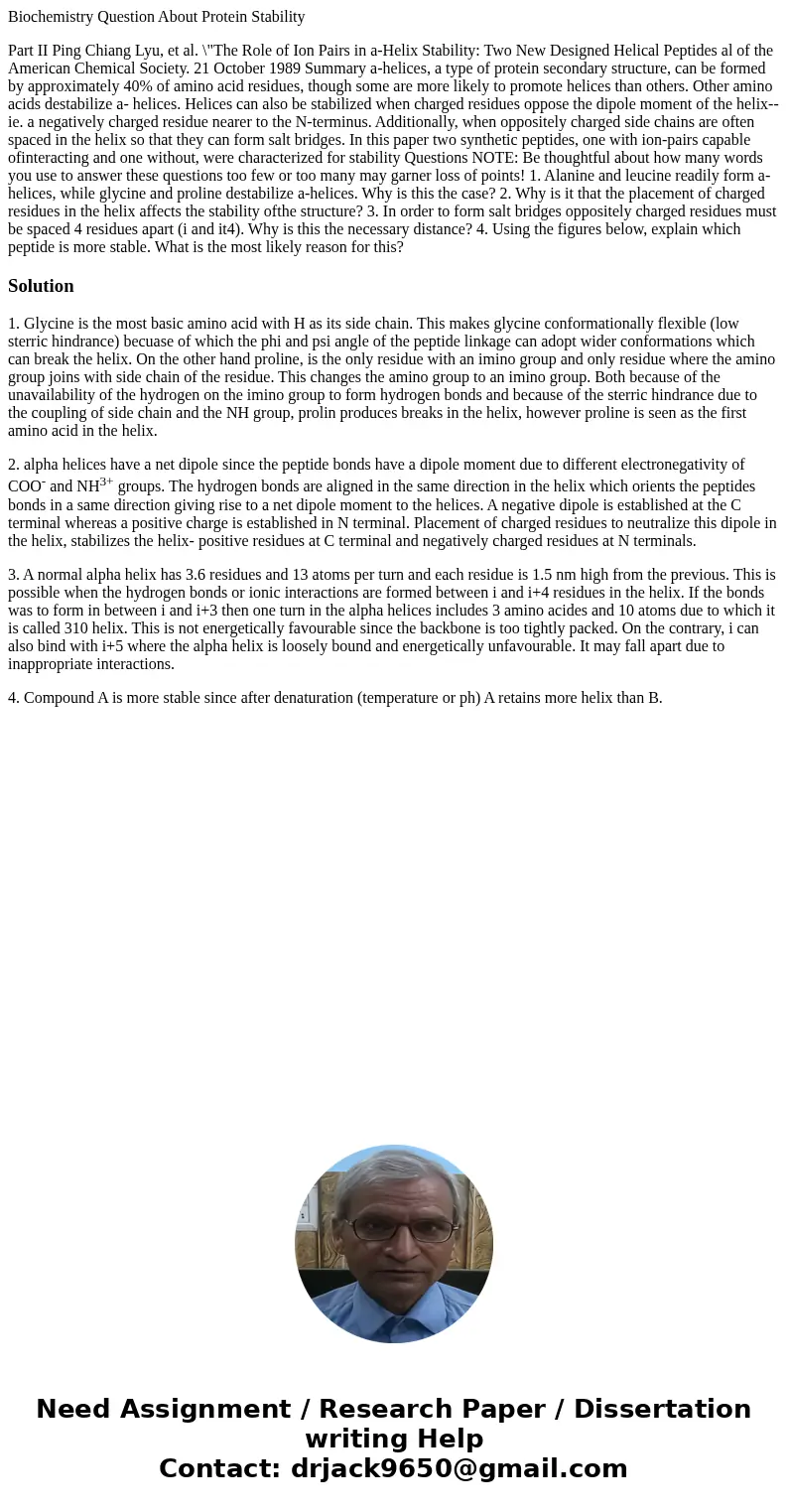Biochemistry Question About Protein Stability Part II Ping C
Biochemistry Question About Protein Stability
Part II Ping Chiang Lyu, et al. \"The Role of Ion Pairs in a-Helix Stability: Two New Designed Helical Peptides al of the American Chemical Society. 21 October 1989 Summary a-helices, a type of protein secondary structure, can be formed by approximately 40% of amino acid residues, though some are more likely to promote helices than others. Other amino acids destabilize a- helices. Helices can also be stabilized when charged residues oppose the dipole moment of the helix--ie. a negatively charged residue nearer to the N-terminus. Additionally, when oppositely charged side chains are often spaced in the helix so that they can form salt bridges. In this paper two synthetic peptides, one with ion-pairs capable ofinteracting and one without, were characterized for stability Questions NOTE: Be thoughtful about how many words you use to answer these questions too few or too many may garner loss of points! 1. Alanine and leucine readily form a-helices, while glycine and proline destabilize a-helices. Why is this the case? 2. Why is it that the placement of charged residues in the helix affects the stability ofthe structure? 3. In order to form salt bridges oppositely charged residues must be spaced 4 residues apart (i and it4). Why is this the necessary distance? 4. Using the figures below, explain which peptide is more stable. What is the most likely reason for this?Solution
1. Glycine is the most basic amino acid with H as its side chain. This makes glycine conformationally flexible (low sterric hindrance) becuase of which the phi and psi angle of the peptide linkage can adopt wider conformations which can break the helix. On the other hand proline, is the only residue with an imino group and only residue where the amino group joins with side chain of the residue. This changes the amino group to an imino group. Both because of the unavailability of the hydrogen on the imino group to form hydrogen bonds and because of the sterric hindrance due to the coupling of side chain and the NH group, prolin produces breaks in the helix, however proline is seen as the first amino acid in the helix.
2. alpha helices have a net dipole since the peptide bonds have a dipole moment due to different electronegativity of COO- and NH3+ groups. The hydrogen bonds are aligned in the same direction in the helix which orients the peptides bonds in a same direction giving rise to a net dipole moment to the helices. A negative dipole is established at the C terminal whereas a positive charge is established in N terminal. Placement of charged residues to neutralize this dipole in the helix, stabilizes the helix- positive residues at C terminal and negatively charged residues at N terminals.
3. A normal alpha helix has 3.6 residues and 13 atoms per turn and each residue is 1.5 nm high from the previous. This is possible when the hydrogen bonds or ionic interactions are formed between i and i+4 residues in the helix. If the bonds was to form in between i and i+3 then one turn in the alpha helices includes 3 amino acides and 10 atoms due to which it is called 310 helix. This is not energetically favourable since the backbone is too tightly packed. On the contrary, i can also bind with i+5 where the alpha helix is loosely bound and energetically unfavourable. It may fall apart due to inappropriate interactions.
4. Compound A is more stable since after denaturation (temperature or ph) A retains more helix than B.

 Homework Sourse
Homework Sourse